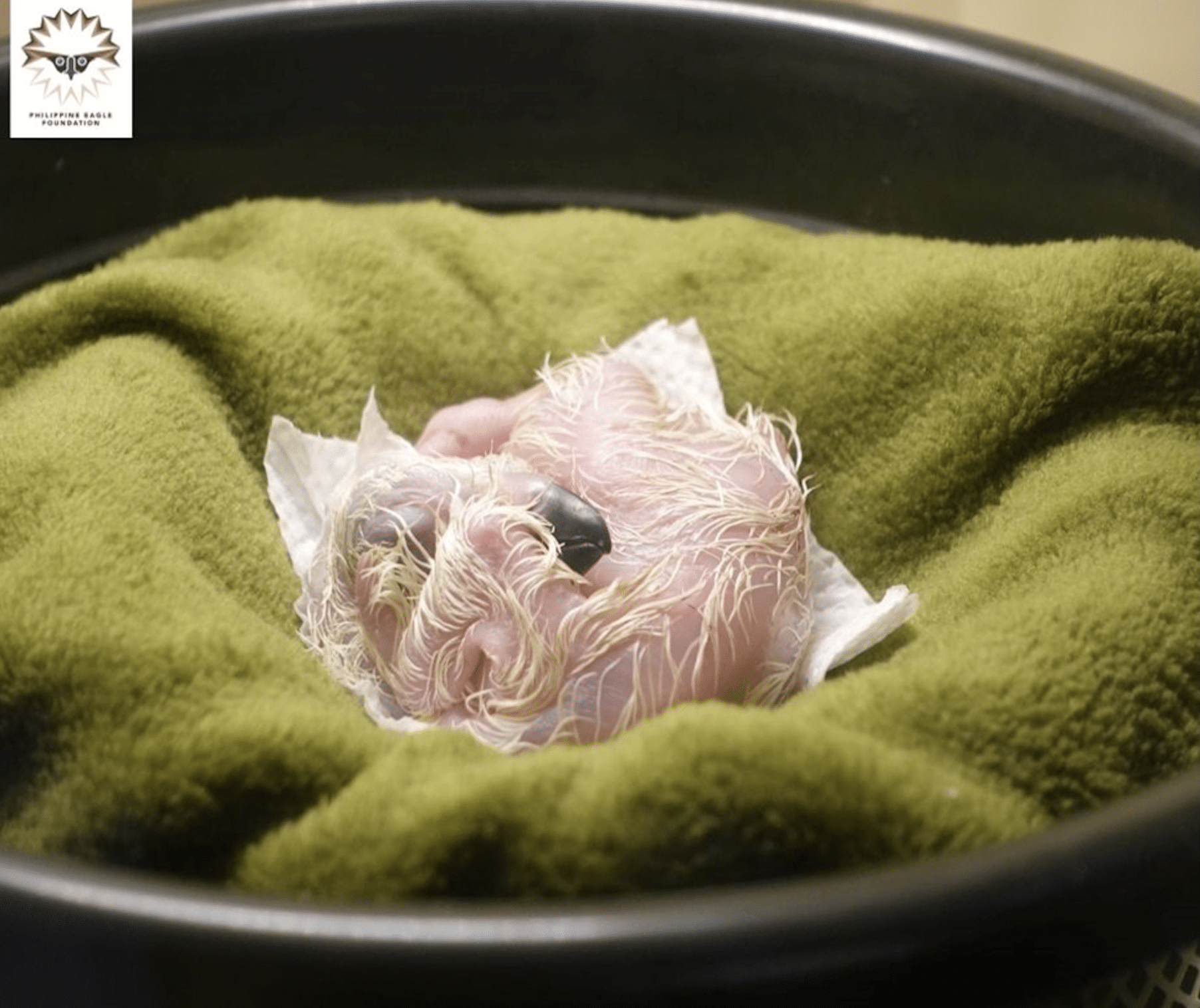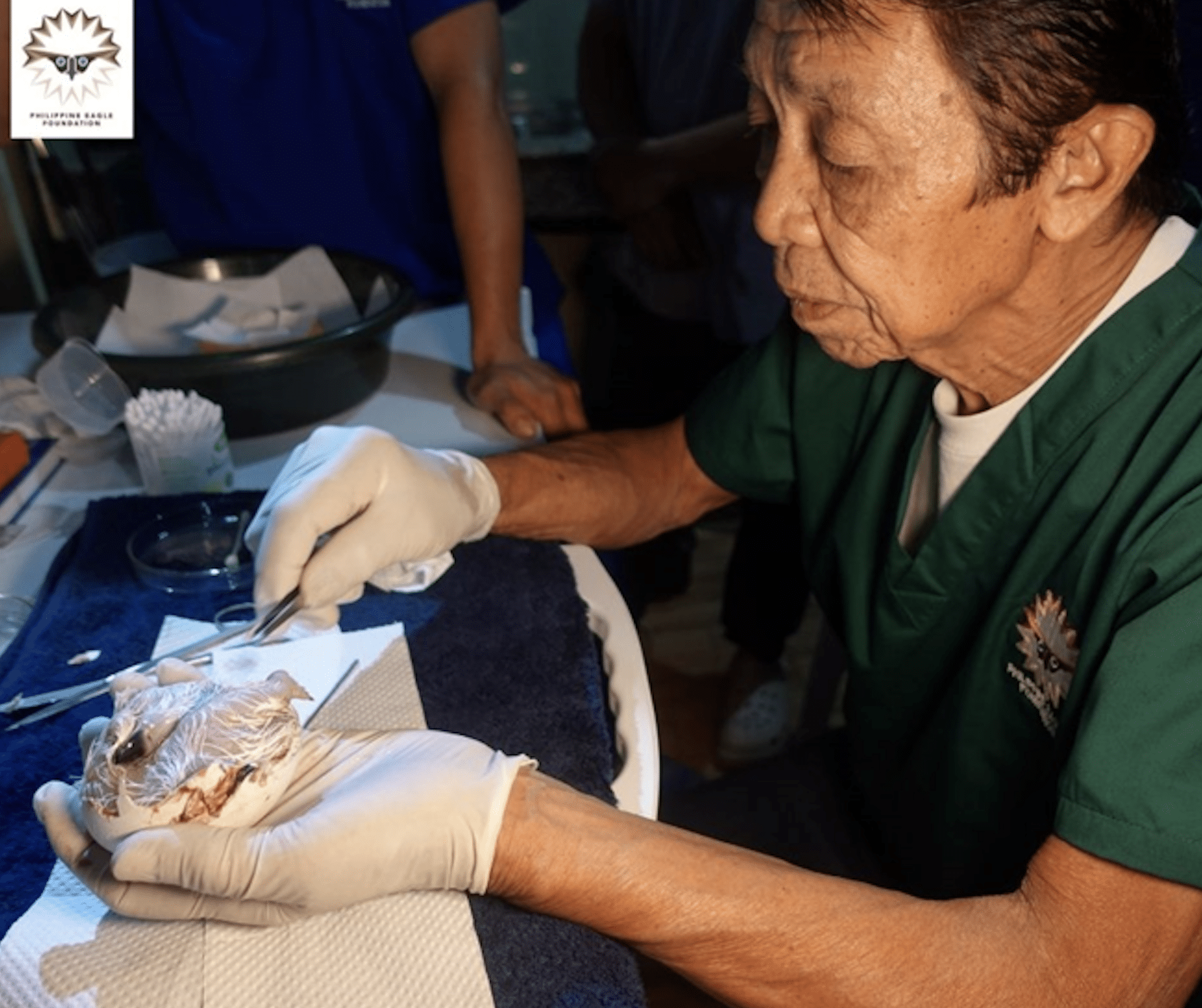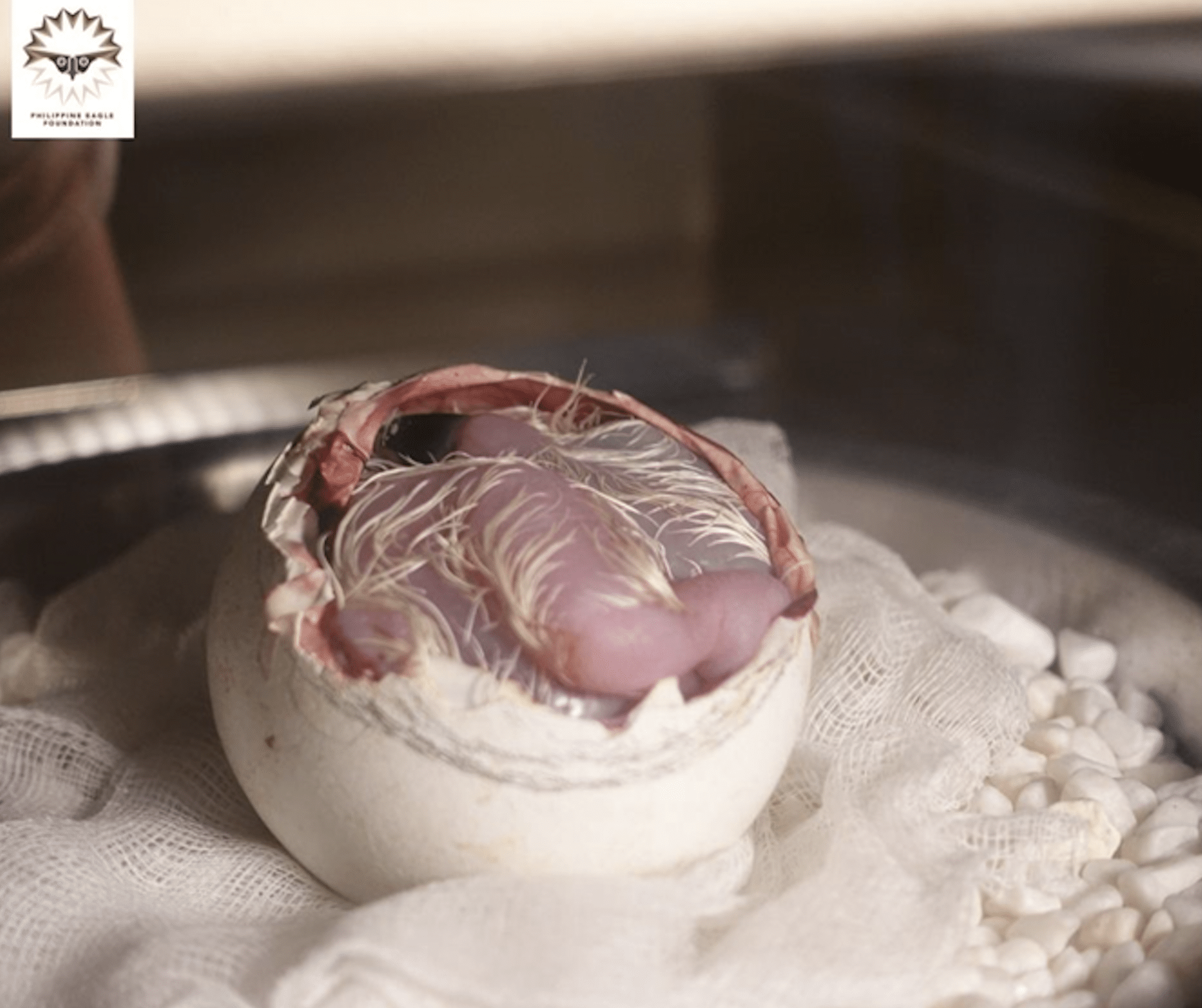More than survival: New life in fight to preserve the Philippine eagle

Philippine eagle chick no. 30 hatches and is transferred to another incubator for intensive care on Monday, Nov. 11. (Photo from the Philippine Eagle Foundation)
MANILA, Philippines — The Philippine eagle, with wings that span seven feet and grayish blue eyes that see eight times sharper than humans, is one of nature’s most commanding birds of prey.
With only an estimated 400 pairs of the species remaining, it is considered critically endangered and threatened by habitat loss and hunting.
READ: Philippine eagle killed in Davao de Oro
On Monday, however, the Philippine Eagle Foundation (PEF) welcomed its 30th chick, hatched at the newly established National Bird Breeding Sanctuary (NBBS) in Eden in Barangay Toril, Davao City.
The egg was produced through cooperative artificial insemination.
Article continues after this advertisementDuring the procedure, a keeper extracted semen from Sinag, an eagle kept at the Philippine Eagle Center facility in the Malagos area of Davao City
Article continues after this advertisementAfter a laboratory test confirmed semen viability, another keeper injected it into a female eagle, Pinpin.
The egg was laid last September 16.
Pinpin incubated the egg naturally for the first seven days, while equipment from the Czech Republic’s Liberec Zoo maintained optimal conditions for development.
Later during the incubation period, breeding experts at the NBBS used the “help out” method, a process in which the eggshell is gently broken open at points where the membrane was not attached.

National Bird Breeding Sanctuary facility manager Domingo Tadena executes the “help out” method on the egg that would hatch into Philippine eagle chick no. 30. (Photo from the Philippine Eagle Foundation)
This prevented the chick inside from suffocation due to excess carbon, PEF said.
After 56 days of incubation, the egg hatched, and the chick was transferred to another incubator with an intensive care feature.

Philippine eagle chick no. 30 gently coming out of its shell. (Photo from the Philippine Eagle Foundation)
“It was a calculated measure based on years of experience and the chick’s status during the later stages of incubation,” NBBS manager Domingo Tadena said.
“Without our intervention, the risk of losing this hatching to suffocation was high. This chick’s survival represents not just a successful breeding cycle,” he added.
The PEF has produced 29 chicks in its conservation breeding program since 1992, with the most recent being in December 2021.
This newly hatched chick brings the total to 30.
Additionally, this is the first chick hatched at the NBBS facility.
“It proves that with cutting-edge technology, cross-cultural collaboration, and unwavering dedication, we can create new hope for the Philippine Eagle and ensure that future generations,” Tadena said.